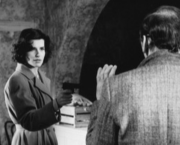
The Piggy Bank of Words
 10 min
10 min
The Piggy Bank of Words
Workshop Diary 4
Translator: Austin Wagner
Storytelling without words has always captivated me. Sometimes I spend entire days looking for the right words, the ones that that fit the atmosphere, style, or age of my story or its characters. Then once I’ve found them, a spend another however-many days getting them in the proper order – even on the last read-through I keep shoving them around, swapping them out so they’ll more precisely convey what I want to say. Of course it’s never enough. I could easily continue the word smithing well after the book has come off the printer.
And then along come others, daring to tell their stories without words. Even years later, my stomach still twists into knots when I think of them. The audacity! How fascinating! I can’t get enough.
I know that









 English
English
 Français
Français
 Deutsch
Deutsch
 Italiano
Italiano
 Español
Español



 Contribuisci
Contribuisci
















 Puoi sostenere i tuoi scrittori preferiti
Puoi sostenere i tuoi scrittori preferiti





